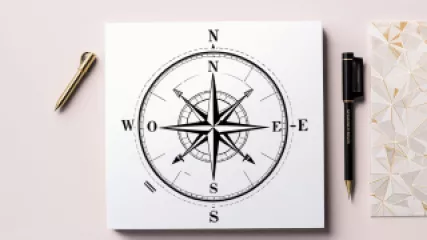5 Questions to Unlock Your Self-Discipline Potential
5 Questions to Unlock Your Self-Discipline Potential
Self-discipline is the key to unlocking your full potential and achieving your goals, but it can be a challenging journey for many. Whether you're trying to build healthier habits, break free from procrastination, or push yourself to reach new heights, cultivating self-discipline is essential. But where do you even begin?
In this article, we'll explore 5 powerful questions that can help you unlock your self-discipline potential and set you on the path to lasting transformation. By delving deep into these thought-provoking queries, you'll gain a better understanding of yourself, uncover your unique motivations, and discover practical strategies to strengthen your self-discipline.
Question 1: What are your core values?
The foundation of self-discipline begins with a deep understanding of your core values. These are the principles, beliefs, and ideals that guide your actions and shape your decision-making. When you align your goals and behaviors with your core values, you tap into a wellspring of motivation and purpose that can sustain your self-discipline over the long haul.
Take some time to reflect on what truly matters to you. What principles do you hold dear? What kind of person do you aspire to become? It's not enough to simply list your values – you need to dive deeper and explore why these values are important to you. By connecting your values to your sense of identity and purpose, you'll create a powerful driving force that can propel you forward, even when the going gets tough.
For example, if one of your core values is health and wellness, you might be more inclined to stick to a consistent exercise routine or make healthier dietary choices. If personal growth is a priority, you may be more likely to embrace challenges, seek out learning opportunities, and push yourself beyond your comfort zone.
Identifying your core values is the first step in cultivating self-discipline that lasts. Once you know what matters most to you, you can start aligning your goals and actions with these fundamental principles, creating a powerful sense of purpose and motivation.
Question 2: What are your biggest obstacles to self-discipline?
Self-discipline doesn't come easy, and it's important to understand the unique challenges and obstacles you face. Every individual has their own triggers, weaknesses, and temptations that can undermine their self-discipline efforts. By identifying these roadblocks, you can develop strategies to overcome them and build a stronger foundation for lasting change.
Take a honest look at the areas where you struggle the most with self-discipline. Do you tend to procrastinate when faced with difficult tasks? Do you find yourself easily distracted by social media, Netflix, or other digital temptations? Are there certain emotions or stressors that cause you to lose focus and abandon your goals?
Once you've pinpointed your primary obstacles, you can start to address them head-on. Maybe you need to implement better time management techniques, or find ways to minimize digital distractions. Perhaps you need to develop healthier coping mechanisms for dealing with stress or negative emotions. By understanding the specific challenges you face, you can tailor your self-discipline strategies to overcome them effectively.
Remember, self-discipline is not a one-size-fits-all solution. What works for one person may not work for another. By taking the time to identify your unique obstacles, you'll be better equipped to build a self-discipline plan that truly resonates with you and sets you up for long-term success.
Question 3: What are your sources of motivation?
Motivation is the fuel that powers self-discipline. It's what keeps you going when the going gets tough, and what drives you to push through obstacles and setbacks. But motivation can be fickle, and it's important to understand the different sources that can inspire and sustain you.
Are you primarily motivated by intrinsic factors, such as a desire for personal growth, a sense of accomplishment, or a deep commitment to your values? Or are you more driven by extrinsic motivators, like the approval of others, financial rewards, or the fear of failure?
Intrinsic motivation tends to be more powerful and sustainable, as it taps into your inner sense of purpose and fulfillment. Extrinsic motivation can be useful, but it's often more fleeting and can even undermine your self-discipline if you become overly dependent on external rewards or validation.
Take some time to reflect on what truly motivates you. What drives you to get up early and hit the gym, even when you don't feel like it? What compels you to tackle that difficult project or learn a new skill, despite the challenges? By understanding the sources of your motivation, you can learn to harness them more effectively and build a self-discipline practice that aligns with your deepest desires and values.
It's also important to recognize that your sources of motivation may change over time. As you grow and evolve, your priorities and passions may shift, and you may need to adjust your self-discipline strategies accordingly. Keep an open mind and be willing to experiment to find what works best for you in the moment.
Question 4: What are your self-discipline success stories?
Reflecting on your past successes with self-discipline can be a powerful way to boost your confidence and reinforce your ability to overcome challenges. By revisiting the times when you've demonstrated strong self-discipline, you can uncover the strategies, mindsets, and support systems that have worked for you in the past, and apply them to your current goals.
Think back to instances where you've successfully built a new habit, pushed through a difficult task, or achieved a significant personal milestone. What were the factors that contributed to your success? Was it a specific routine or system you put in place? Did you have an accountability partner or supportive community to help keep you on track? Were there particular mental or emotional strategies that helped you stay motivated and resilient?
By analyzing your past self-discipline victories, you can identify the key ingredients that make you successful. This knowledge can then be applied to your current and future self-discipline endeavors, helping you develop a playbook of proven strategies that you can rely on when the going gets tough.
Remember, self-discipline is a skill that can be developed and refined over time. Celebrate your past successes, no matter how small, as they serve as evidence of your ability to cultivate strong self-discipline. Use these experiences as a source of inspiration and confidence as you continue on your journey of personal growth and transformation.
Question 5: What support systems do you need to thrive?
Self-discipline is not something you have to (or should) tackle alone. Surrounding yourself with the right support systems can make all the difference in your ability to develop and maintain strong self-discipline habits.
Consider the following potential support systems that could enhance your self-discipline efforts:
- Accountability partners - Find a friend, family member, or fellow self-discipline enthusiast who can check in on your progress, celebrate your wins, and gently hold you accountable when you're struggling.
- Online communities - Engage with like-minded individuals in online forums, social media groups, or dedicated self-discipline communities to share experiences, exchange tips, and draw inspiration from others' journeys.
- Mentors or coaches - Seek out experienced individuals who have mastered self-discipline in their own lives and can provide personalized guidance, support, and accountability to help you achieve your goals.
- Productivity tools and apps - Utilize digital tools and apps that can help you manage your time, reduce distractions, and stay on track with your self-discipline practices.
- Supportive environments - Surround yourself with people, places, and routines that nurture and reinforce your self-discipline, rather than undermine it.
By identifying and tapping into the right support systems, you can significantly increase your chances of success. Self-discipline is not a solo endeavor – it thrives when you have a strong network of support and encouragement to lean on.
Take the time to reflect on the people, resources, and environments that could bolster your self-discipline efforts. Then, make a plan to actively seek out and cultivate these support systems. With the right team in your corner, you'll be well on your way to unlocking your full self-discipline potential.
Conclusion: Embracing the Self-Discipline Journey
Cultivating self-discipline is a lifelong journey, one that requires a deep level of self-awareness, resilience, and a willingness to continuously adapt and learn. By exploring the five powerful questions we've outlined in this article, you'll gain a deeper understanding of yourself, your motivations, and the strategies that can help you build lasting self-discipline.
Remember, self-discipline is not a one-size-fits-all solution. What works for one person may not work for another. Be patient with yourself, experiment with different approaches, and be open to adjusting your strategies as your needs and circumstances evolve.
Embrace the ups and downs of the self-discipline journey. Celebrate your victories, learn from your setbacks, and keep pushing forward. With dedication, self-reflection, and the right support systems in place, you can unlock your full self-discipline potential and achieve remarkable personal and professional growth.
So, are you ready to take the first step towards unlocking your self-discipline potential? Reflect on the questions we've explored, and start putting your newfound insights into action. The path to self-discipline may not be easy, but the rewards are truly transformative. Embark on this journey with an open mind, a spirit of resilience, and a steadfast commitment to your personal growth. The future you is waiting to be discovered.






